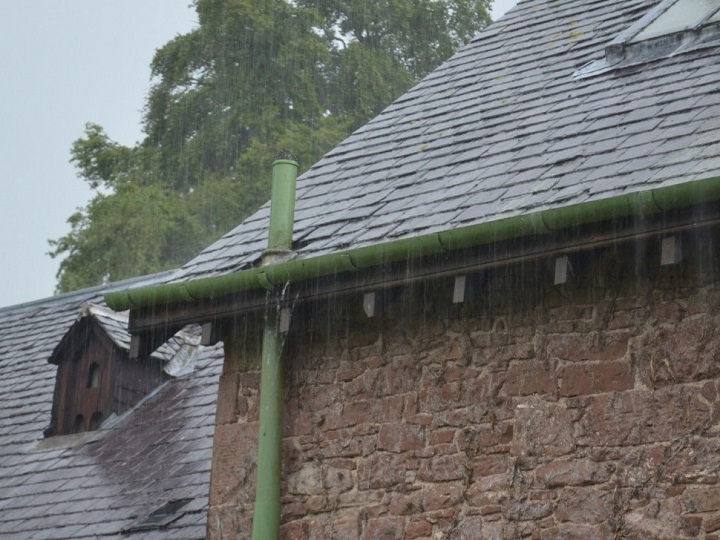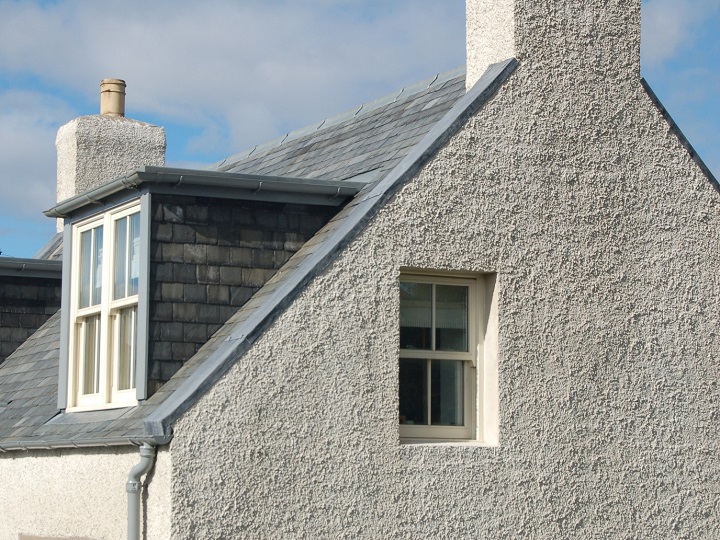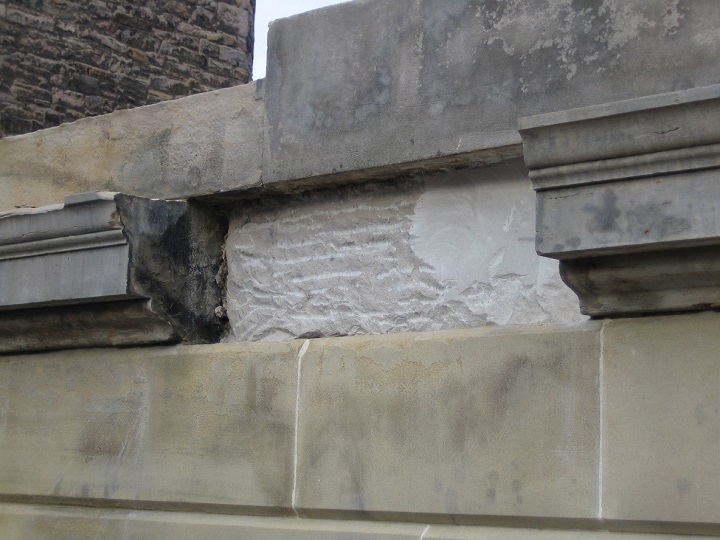How to protect your older building or home from storms
Climate Change, Maintenance, Sustainability | Written by: Lila Angelaka | Thursday 30 September 2021

There have always been storms in Scotland, but the changing climate means a higher frequency of severe weather events. It’s important to be aware of how to protect both yourself and your older building from damage caused by the weather.
What does Scotland’s changing climate mean for older buildings?
In Scotland, climate change generally means milder but wetter winters, extreme rainfall, landslide and rising sea levels.
While older buildings were designed to keep water out, some may not be doing it as well now. This is not necessarily about defects and lack of maintenance.
When there was less rainfall, architectural elements were designed so that they could deal with rain. However, increased rainfall means we now may need to adapt buildings to deal with this more extreme weather.

Look after your building
The best place to start when thinking about storm-proofing your home? Maintenance!
Maintaining your building is as important as taking extra measures to prepare for a storm. Make sure repairs are done well, using the right skills and materials for a traditional building.
Some key things you can do are:
- Inspect your roof and chimney regularly, especially before winter. Fix any damage like broken or missing tiles and slates, or bituminous flat roof coverings that may have detached
- Replace missing or defect elements using the right materials. Inappropriate or modern materials which are marketed as more durable, may have undesired consequences. Organisations like the National Federation of Roofing Contractors can help you get started with roof repair

- Check your rainwater goods and drainage. Clean your gutters, down pipes and drains regularly to prevent blockages from debris and vegetation growth. Ensure any pots in your garden/front door are not covering ground drainage
- Check the joints between the lengths of rhones are secure and watertight. Also, be mindful of inappropriate replacements. Poor design and fitting may mean that they can’t cope with the intensity of rain coming down. You may even need to think about installing a larger width rhone
- Check the nearby drainage if you have a road close by, as a blockage in a road culvert some distance away might cause a run of water downhill to your back door. You may want to check the condition of adjacent road drainage yourself and talk to the roads department of the council if you think buildings will be affected by run off
- Check any air vents at ground level are unobstructed and that ground level around your building is not raised. If it is, it should be lowered, especially if it is obstructing an air vent or bridging a damp proof course

- In the winter, turn off and drain outdoor pipes or ensure pipes are properly insulated to prevent them from bursting
- High buildings are vulnerable to lightning. While we don’t see lightning as much as high winds and rain, it is happening more as temperatures rise. Hight points should have conductors fitted to take any strike down to the ground. As with many extreme natural events, lightening will damage weaker poorly maintained structures more. However, even well looked after stonework can be shattered
- Draught-proof your windows, doors and any other openings (such as chimney balloons in hearths). However, make sure these measures still allow a degree of ventilation throughout the building. This can even help the drying out process after a rainstorm or flood
When you know a storm is coming
Take these extra measures to prepare when you know bad weather is coming. Check your property once the storm has passed
- Secure or store items that could blow around in strong winds. Check that there aren’t any bins and items which could lift and be catapulted to your building
- Check high level masonry. Replace missing stones and check that there are not any loose stones at high level (such as chimney stacks and parapets). These can come off completely during a high wind and cause serious injury and damage
- Make a note of where the taps or switches to turn off your gas and electricity are ahead of an electrical storm
Prepare for flooding
Along with storms, predictions for climate change indicate that flooding throughout Scotland is likely to get worse over the coming years.
Maintaining the drainage around your property is important.
There are many products which can temporarily protect a building against flooding. Sandbags are the most basic, but more specialised products include air-brick covers and plastic or metal boards for sealing openings such as doors and windows.
On a larger scale, ‘flood skirts’ can be wrapped around the walls of buildings to prevent water seeping through.
Consider installing sump pumps in basements and solums at risk of flooding.
Avoid modern waterproofing techniques, for example “tanking” with bituminous or plastic material (creating a tank-like seal to protect walls from water), as these do not address the source of the water ingress and may simply be trapping the moisture in the structure leading to further saturation of the masonry.
Generally, we would advise against replacing elements such as timber doors or floorboards with waterproof alternatives (e.g. plastic and concrete) to mitigate the risk of damage from future flooding in traditional buildings. Such an approach not only results in the loss of original materials but can actually make drying out after a flood more difficult.
Find out if your home is at risk of flooding with this free service from SEPA (Scottish Environment Protection Agency), which could help you forward plan. The Scottish Flood Forum provides a free independent flood protection survey.
More guidance and support
Our free downloadable guides and our website has more guidance to help owners of traditional buildings:
- Inform Guide: Improving Energy Efficiency in Traditional Buildings
- Inform Guide: Flood Damage to Traditional Buildings
- Inform Guide: De-icing Salts and Traditional Masonry
- Short Guide: Climate Change Adaptation for Traditional Buildings
- How to Deal with Damp in Walls
- Short Guide: Maintaining Your Home
- Share this:
- Share this page on Facebook
- Share on X
About the author:
Lila Angelaka
Lila is a Senior Technical Officer in the Technical Research Team. Her background is in architecture and conservation, and she previously worked as a Casework Officer. In her current role, she provides technical advice, both internally and externally, and is responsible for the writing and editing of a number of technical publications, such as the Technical Papers and Refurbishment Case Studies.
View all posts by Lila Angelaka



